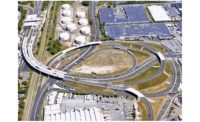ENR New York’s 2019 Best Projects
I-280/Route 21 Interchange Improvements

I-280/Route 21 Interchange Improvements
PHOTOS COURTESY MICHAEL BAKER INTERNATIONAL

I-280/Route 21 Interchange Improvements

I-280/Route 21 Interchange Improvements

I-280/Route 21 Interchange Improvements




I-280/Route 21 Interchange Improvements
Newark
Best Project
Owner: New Jersey Dept. of Transportation
Lead Design Firm, Civil and Structural Engineer: Michael Baker International
General Contractor: George Harms Construction
Subconsultants: Gannett Fleming Inc.; Malick & Scherer PC; Management Interventions; Martine A. Culbertson
The interchange between Interstate 280 and state Route 21 in Newark had long been a convoluted puzzle to drivers, and streamlining the connection was the primary goal of a $95-million project completed earlier this year.
Reconstructing the link between the major artery I-280, which carries 80,000 vehicles daily, and a busy local thoroughfare was a complex challenge from the start in 2015. The project aimed to fix geometric flaws, improve safety, add missing interchange flows and optimize traffic movement on the highway—all while keeping the roadways in use and working on a tight site framed by Newark’s oldest neighborhood, an urban train station and the historic Stickel drawbridge carrying I-280 over the Passaic River.
The project entailed reconstructing four bridges, rehabilitating two other spans, widening I-280 to add shoulders, building three missing interchange sections and removing two 60-year-old ramps from the highway to local roads that were structurally deficient or obsolete and had geometric shortcomings. The design fit new ramps and flyovers into the cramped urban quarter using various methods, including a curved girder structure, 11 retaining walls and a new bulkhead. The team also relocated utilities, added sign structures, disposed of hazardous materials and repaired damaged sections of the I-280 viaduct deck.
The team focused its design and construction efforts to avoid impacting Newark’s Broad Street Station, Stickel Bridge, the Plume House—the city’s oldest building—and other historic structures by carefully coordinating utility work and monitoring vibration.
The team also made detailed plans to maintain four lanes of traffic on I-280 for most of the project by building temporary elevated roadways, which improved safety and avoided the need for cattle chutes and multiple substages. The deck replacement effort for the I-280 Broad Street Bridge also employed creative techniques, using lightweight concrete with increased top cover to improve live load capacity and limit the amount of structural steel retrofitting.
Back to "Airports, Culture Projects Dominate Region’s Awards"







